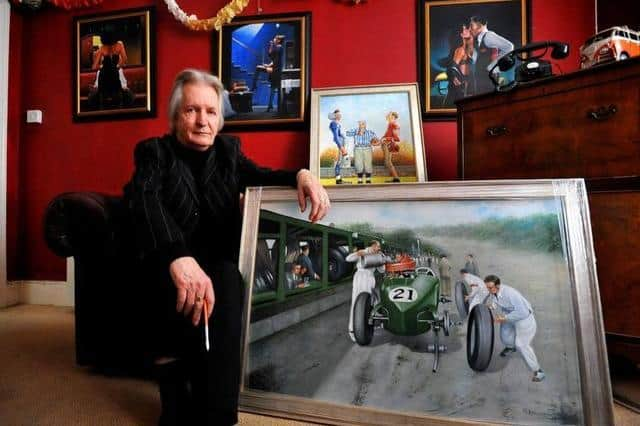“Britain’s No 1 Art Forger” reveals all from his West Sussex home


Max, aged 72, lives in Burgess Hill
“This book is about the exciting journey through my life: being taken away from my mum in the poverty of post-war Brighton and into the care of Barnardo’s; growing up in a series of institutions and foster homes; working as a teenager in a travelling circus with my own herd of elephants; busking and selling my pictures on Portobello Road; a close encounter with the Krays; trucking around from place to place; living rough; living it up; fooling some of the world’s most prestigious art galleries and auction houses; serving time in prison; trying to find my dad; and raising thousands of pounds for charity.
“And there’s a lot more which is in the book!
“I think people of all ages will enjoy the book. It spans 70 years, and it’s a real rollercoaster ride and a lot of fun.”
Advertisement
Hide AdAdvertisement
Hide AdDubbed the Beau Brummell of Burgess Hill for his natty dressing, Max said: “They call me the Master Forger.
“My life has been very varied. I got nicked three times.”
Max developed his art skills after running away from his Barnardo’s children’s home to join the circus at 15.
While grooming elephants and painting the trucks for two years, he found his passion for art.
After a chance meeting with forger Tom Keating, Max was tempted to experiment with copying the great masters.
Advertisement
Hide AdAdvertisement
Hide AdWord of his talents reached the black market, and the Kray twins asked for a portrait of their mother, which luckily they loved.
Max however, did end up paying the price with three prison sentences and promised he wouldn’t do it again, even when his most profitable piece fetched over £12,000 back in the 80s.
Even today, many people don’t know exactly what is hanging on their walls…
“When I see an old canvas, I just want to paint a fake on it. I love the old masters. I love doing them.
“I am the sort of artist that will copy anything.
Advertisement
Hide AdAdvertisement
Hide Ad“I love the different styles. I love doing Caravaggio or Rockwell.
“I don’t like the abstracts and the modern works so much, but I love doing what I am doing now. All the years in the wilderness, I was struggling, but suddenly everybody wants to know me.
“If I am doing a Caravaggio now, I would not be trying to fool anybody. They are reproductions of a very high quality.
“I don’t have the urge to do my own work. No, not really. Unless you are somebody like Banksy or Damien Hirst, you have got to know the right people. But no, I am not really interested in doing my own work.”
Advertisement
Hide AdAdvertisement
Hide AdMuch more important to Max is simply to get respect for the work he does copying other people’s pieces.
He prefers working on detailed recreations that challenge his skills such as battle scenes, ships and animals. He still produces copies of famous pieces, but by changing one tiny detail in each image, this time it is legal, he says.
“My paintings are good. I am one of the better ones. There are others that do it, but yes, I am good. I spent three years in Ford. When you are in prison, people like to know your story. They were saying ‘Max the forger is in!’ and the governor would let me have oil paints. I was even doing a bit of painting while I was in there.
“Yes, forgery is a crime if you are fooling people and you are doing it in a big way. But I went through bad times and the money was good. Tom Keating was one of the best and he taught me so much.
Advertisement
Hide AdAdvertisement
Hide Ad“I was 18 or 19 and I got carried away. I should have stopped when Keating died, but I didn’t. I just carried on. But I would never do it again now…”
Max added: “I recounted my life story to Anthony Valentine, and he actually wrote the book. He is well known for writing TV dramas, plus he’s written for magazines and advertising.”
Have you read: Hastings panto announced
Have you read: Exploring the great joys of the South Downs WayHave you read: Titanic The Musical heads to Southampton
Advertisement
Hide AdAdvertisement
Hide AdHave you read: So many reasons to celebrate as Chichester's Pallant House Gallery marks 40 yearsHave you read: Search begins for 2022 Sussex Young Musician
Advertisement
Hide AdAdvertisement
Hide Ad